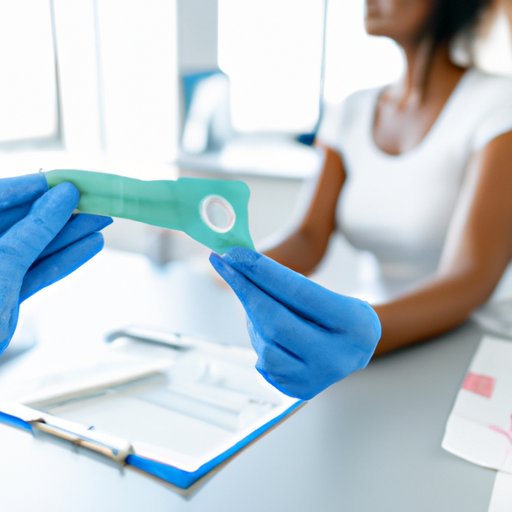
Introduction
Chlamydia is one of the most common sexually transmitted infections (STIs) in the world. According to the World Health Organization (WHO), an estimated 131 million people are infected with chlamydia each year. Fortunately, chlamydia is treatable with antibiotics. However, many people wonder how they can know if chlamydia is gone after treatment. This article will explore various tests used to confirm successful treatment, the importance of follow-up testing, and provide insights and advice from healthcare professionals and those with personal experiences.
Tests for Confirming Successful Treatment
There are two main tests used to confirm if chlamydia has been successfully treated: nucleic acid amplification tests (NAATs) and culture tests. NAATs are the preferred method because they are more sensitive and can detect chlamydia even if there are only small amounts of the bacteria present. Culture tests involve growing a sample of body fluid on a special medium and can take up to a week to get results.
It is recommended that patients wait at least three weeks after completing treatment before getting tested. This waiting period allows time for all traces of the infection to clear from the body. During the testing process, doctors or nurses will collect a sample of urine or swab from the cervix or penis, depending on the patient’s sex. The process of getting tested is quick and painless. Results are typically available within a few days.
Personal Account of Someone Who Underwent Successful Treatment
Sarah, a 25-year-old woman, was diagnosed with chlamydia after experiencing unusual discharge and itching. She was prescribed a week-long course of antibiotics, which she completed without issue. Three weeks later, she returned to the clinic for follow-up testing. Her test results came back negative, indicating that the chlamydia infection was gone.
Throughout the treatment process, Sarah felt anxious and embarrassed about having chlamydia. She worried about the possibility of complications, such as infertility. However, she found comfort in confiding in a trusted friend and staying informed about the infection and treatment process.
Symptoms of Persistent Infection and Importance of Follow-up Testing
In some cases, an individual may still have chlamydia after initial treatment. Symptoms of persistent infection include abdominal pain, pain during sex or while urinating, and unusual discharge. If left untreated, persistent infection can lead to serious complications such as pelvic inflammatory disease (PID) and infertility. This is why follow-up testing after treatment is crucial.
It is recommended that patients get tested again three months after treatment. However, those at high risk for reinfection (such as those with multiple sexual partners) may need to be tested more frequently.
Insights from Healthcare Professionals
Dr. John, a healthcare professional who specializes in STIs, stresses the importance of taking all prescribed antibiotics in their entirety, even if a patient’s symptoms clear up before the end of treatment. He explains that taking antibiotics inconsistently or not finishing the entire course can lead to antibiotic resistance and the infection not being completely cleared from the body.
Regarding side effects, Dr. John advises patients to report any unusual symptoms to their healthcare provider. He also recommends using condoms during sexual activity while being treated for chlamydia to avoid reinfection and reduce the risk of contracting other STIs.
Coping with the Emotional and Psychological Aspects of Chlamydia
Being diagnosed with and treated for chlamydia can be emotionally and psychologically challenging for some individuals. Feelings of shame, embarrassment, and anxiety are common. It is important to remember that chlamydia is a common infection that can happen to anyone who is sexually active.
Strategies for coping include finding support from loved ones and peers, seeking counseling or therapy, and staying informed about the infection and treatment. It is also important to practice safe sex to reduce the risk of contracting STIs in the future.
Conclusion
Chlamydia is a common STI that is treatable with antibiotics. However, in order to ensure successful treatment, patients should get tested again after completing their antibiotics. Healthcare professionals can provide guidance and advice on how to manage side effects and prevent reinfection. Coping with the emotional and psychological aspects of chlamydia is important for overall wellbeing. Remember, getting tested and seeking treatment for STIs is nothing to be ashamed of – it’s essential for maintaining good sexual health.





